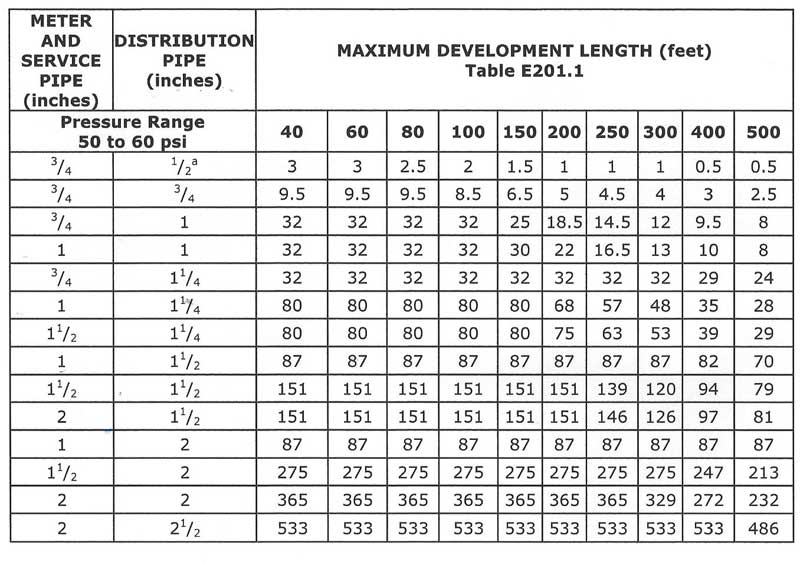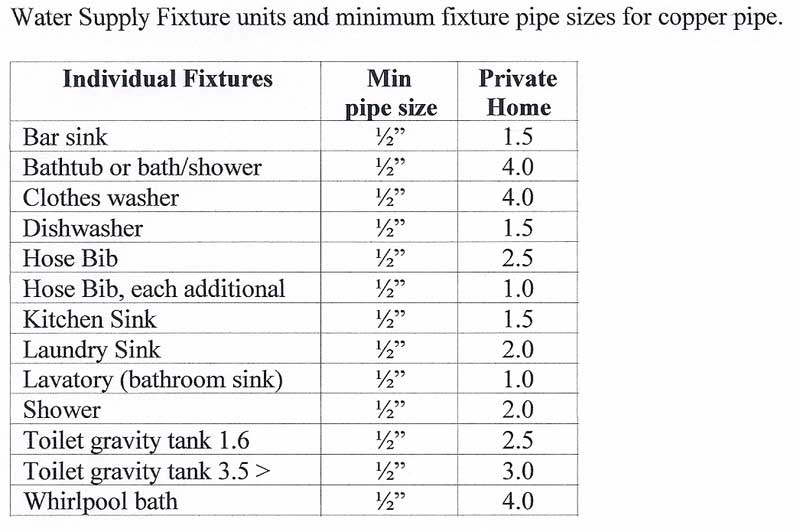sam36
New Member
Howdy,
In the next few months I am going to be moving a mobile home onto some existing property to live next to some aging relatives. I've got everything figured out in order to get the trailer onto the property except for how to run the water service. Or rather, the best way to run the water service.
This is what the property currently looks like: https://i.imgur.com/6OllYOf.png
Basically up front there is a 3/4" water meter that has about 1 ft of iron pipe that runs to an iron tee. Right above the tee is a hose faucet and then somehow it transitions to 1" PVC (haven't dug up that part yet to check for sure). The 1" PVC runs about 80 ft diagonally to a tee which has a line running to a backyard hose faucet, the other end continues to the house.
So the house I am putting on the property will be at the back of the lot and about 300 ft from the water meter. Originally I was just going to re-run everything with Pex and then I found out that 1" pex is not 1" on the inside and for 300+ ft I really needed something with 1 1/4" inside diameter. So basically needed 1 1/2" pex and that stuff is nearly $2 a ft and tools and fittings for that size are hard to find. I've seen recommendations for using poly pipe for water supply runs but it seems once you get diameters above 1" you start getting close to the $1 per foot price range and might as well just stick with PVC. I've also had trouble figuring out the fittings needed for poly pipe as well, seems most insert type fittings are unbranded and probably made in china and I don't want to have any de-zinc problems down the road (although the water quality here is pretty good but that could always change as the county sources water from different lakes and aquifers every year).
So for my latest idea, I figured I'd just try to run a 1 1/4" PVC "trunk" line and tee off from that to either 1" pex or 1" pvc: https://i.imgur.com/QI4sL6E.png I'm leaning towards only having pex transitions from the 1 1/4" PVC as it seems every 5 years or so we already have leaks in the existing PVC anywhere there is a 90* or 45* joint. Not sure if its just because its only buried about a ft deep or just improperly glued but I really don't want to add more PVC to the property. But I feel safe with a single straight run with a tee in the middle to tie into the existing house. Also there will be a new driveway going over the pipe, so I am going to bury that about 2+ ft deep which would mean it would be hard to tie into the existing PVC since it is only 1 ft deep. Seems like with pex, I would not have to worry about making sure everything is lined up just right as you would with connecting new PVC to existing PVC. But then again, having seemingly random runs of pex connecting from new PVC and running to old PVC seems somewhat unorthodox... But I feel like I'd trust some pex with copper crimps better than PVC coupled together at various angles and depths... Either way, for the run to the new house, I'll probably stop the 1 1/4" PVC about 100 ft from it and transition to 1" pex which will run the rest of the way.
As far as transitioning from PVC to Pex, seems the old way was to either use a sharkbite or a brass barb with a FIP socket on one end and then screw a PVC MIP adapter into that. Both ways seem to have their issues and then I found these: https://www.pexuniverse.com/sioux-chief-1-pex-pvc-adapter-lead-free-645x4p a copper fitting with a pressed in PVC socket and pex barb on the other end. Seems like a good product but there is a pressed o-ring internally but I guess it should be reliable, or at least I'd hope.
If I go this route, I'll probably tie into the old 1" PVC a few feet from the water meter with the new 1 1/4" PVC. I'd rather not do that, but I don't want to mess with the 30 year old iron pipe that is already there. At least not yet, I've got enough on my plate. Really not sure the best way to tie into the water meter tail piece anyway, I'd be tempted to just use Pex again and a brass MIP with barb. Probably better than trying to screw a PVC MIP coupling into the meter. Everyone that has PVC running straight into their meters seems to have them break every few years for one...
We are in central Texas so it rarely freezes. The dirt is the Texas "black gumbo" which shrinks a lot in the dry summer and expands a lot in the wet spring. Full of rocks in places too. I'm going to attempt to run everything at least 2ft in the ground. Might go 3 ft but if I ever spring a leak, digging for 3 feet will not be fun. We are not in the city limits and the county only has a few codes to follow.
So I'm fully open to suggestions. Am I somewhat on the right track or way off?? All the old timers around here seem to just suggest to run all PVC, but I really don't like that stuff. And I don't like leaks either.....
All the old timers around here seem to just suggest to run all PVC, but I really don't like that stuff. And I don't like leaks either.....
In the next few months I am going to be moving a mobile home onto some existing property to live next to some aging relatives. I've got everything figured out in order to get the trailer onto the property except for how to run the water service. Or rather, the best way to run the water service.
This is what the property currently looks like: https://i.imgur.com/6OllYOf.png
Basically up front there is a 3/4" water meter that has about 1 ft of iron pipe that runs to an iron tee. Right above the tee is a hose faucet and then somehow it transitions to 1" PVC (haven't dug up that part yet to check for sure). The 1" PVC runs about 80 ft diagonally to a tee which has a line running to a backyard hose faucet, the other end continues to the house.
So the house I am putting on the property will be at the back of the lot and about 300 ft from the water meter. Originally I was just going to re-run everything with Pex and then I found out that 1" pex is not 1" on the inside and for 300+ ft I really needed something with 1 1/4" inside diameter. So basically needed 1 1/2" pex and that stuff is nearly $2 a ft and tools and fittings for that size are hard to find. I've seen recommendations for using poly pipe for water supply runs but it seems once you get diameters above 1" you start getting close to the $1 per foot price range and might as well just stick with PVC. I've also had trouble figuring out the fittings needed for poly pipe as well, seems most insert type fittings are unbranded and probably made in china and I don't want to have any de-zinc problems down the road (although the water quality here is pretty good but that could always change as the county sources water from different lakes and aquifers every year).
So for my latest idea, I figured I'd just try to run a 1 1/4" PVC "trunk" line and tee off from that to either 1" pex or 1" pvc: https://i.imgur.com/QI4sL6E.png I'm leaning towards only having pex transitions from the 1 1/4" PVC as it seems every 5 years or so we already have leaks in the existing PVC anywhere there is a 90* or 45* joint. Not sure if its just because its only buried about a ft deep or just improperly glued but I really don't want to add more PVC to the property. But I feel safe with a single straight run with a tee in the middle to tie into the existing house. Also there will be a new driveway going over the pipe, so I am going to bury that about 2+ ft deep which would mean it would be hard to tie into the existing PVC since it is only 1 ft deep. Seems like with pex, I would not have to worry about making sure everything is lined up just right as you would with connecting new PVC to existing PVC. But then again, having seemingly random runs of pex connecting from new PVC and running to old PVC seems somewhat unorthodox... But I feel like I'd trust some pex with copper crimps better than PVC coupled together at various angles and depths... Either way, for the run to the new house, I'll probably stop the 1 1/4" PVC about 100 ft from it and transition to 1" pex which will run the rest of the way.
As far as transitioning from PVC to Pex, seems the old way was to either use a sharkbite or a brass barb with a FIP socket on one end and then screw a PVC MIP adapter into that. Both ways seem to have their issues and then I found these: https://www.pexuniverse.com/sioux-chief-1-pex-pvc-adapter-lead-free-645x4p a copper fitting with a pressed in PVC socket and pex barb on the other end. Seems like a good product but there is a pressed o-ring internally but I guess it should be reliable, or at least I'd hope.
If I go this route, I'll probably tie into the old 1" PVC a few feet from the water meter with the new 1 1/4" PVC. I'd rather not do that, but I don't want to mess with the 30 year old iron pipe that is already there. At least not yet, I've got enough on my plate. Really not sure the best way to tie into the water meter tail piece anyway, I'd be tempted to just use Pex again and a brass MIP with barb. Probably better than trying to screw a PVC MIP coupling into the meter. Everyone that has PVC running straight into their meters seems to have them break every few years for one...
We are in central Texas so it rarely freezes. The dirt is the Texas "black gumbo" which shrinks a lot in the dry summer and expands a lot in the wet spring. Full of rocks in places too. I'm going to attempt to run everything at least 2ft in the ground. Might go 3 ft but if I ever spring a leak, digging for 3 feet will not be fun. We are not in the city limits and the county only has a few codes to follow.
So I'm fully open to suggestions. Am I somewhat on the right track or way off??


